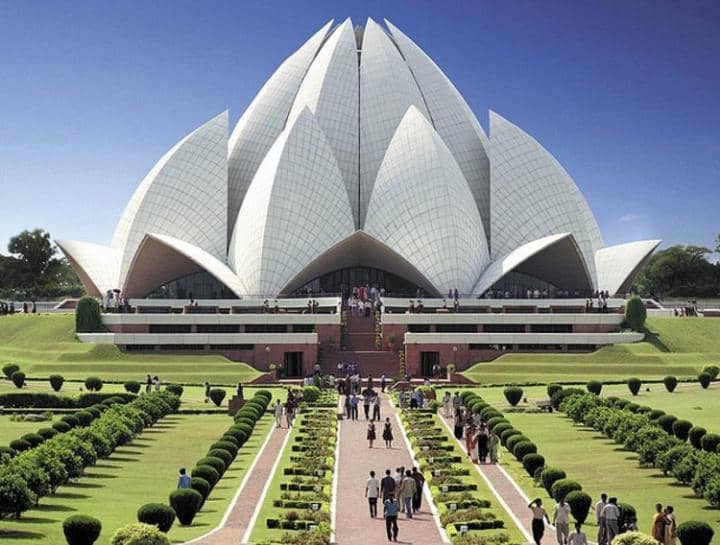The Lotus Temple, a Bahá’í House of Worship located in New Delhi, India, is celebrated for its stunning lotus flower-inspired design. Completed in December 1986, it was envisioned by Iranian architect Fariborz Sahba. The temple features 27 free-standing marble petals arranged in clusters of three, forming nine sides, symbolizing unity among all religions.
This architectural masterpiece has become one of the most visited religious buildings globally, attracting millions of visitors each year.
The structure is elevated on a podium, enhancing its visibility against the backdrop of the surrounding landscape.
The three tiers of petals curve inward and outward, creating a sense of openness and inviting light into the central hall. This hall, with a height of 34 meters and a seating capacity of 1,300, is devoid of idols or religious symbols, reflecting the Bahá’í principle of inclusivity. The temple’s design incorporates natural elements, utilizing light and water instead of traditional ornamentation.
Surrounding the temple are nine serene reflecting pools, designed to resemble the lotus flower’s leaves. These pools not only enhance the aesthetic appeal but also contribute to the temple’s cooling system, as fresh air is drawn in and circulated through the building.
The exterior is clad in white marble sourced from Greece, renowned for its durability and beauty, while the interior features bush-hammered concrete, showcasing a blend of modern and traditional materials.
The Lotus Temple has received numerous architectural awards and accolades for its innovative design. It stands as a testament to modern Indian architecture and is often compared to iconic structures like the Sydney Opera House.
The temple is also the first in Delhi to employ solar energy, reflecting a commitment to sustainability and environmental consciousness.
Open to all, the Lotus Temple serves as a gathering place for spiritual reflection and meditation. Visitors can participate in prayer services, which are held several times a day, fostering a sense of peace and community.
With its unique design and welcoming atmosphere, the Lotus Temple remains a significant symbol of harmony and unity in a diverse world.

